The production process of
16MnDG seamless steel pipe mainly includes hot rolling and cold rolling (drawing). The following is a detailed introduction:
The hot rolling process of 16MnDG seamless steel pipe
1. Preparation and inspection of tube billet: Select steel billets that meet the chemical composition and quality requirements, strictly inspect their surface quality, dimensional accuracy, etc., remove surface defects such as cracks and scars, etc., to ensure the quality of tube billets.
2. Heating of tube billets: Send the qualified tube billets into the heating furnace and heat them to a suitable temperature range, generally around 1200℃-1250℃, so that the tube billets have good plasticity and machinability.
3. Perforation: The heated tube billets are sent to the perforator for perforation. Through the mechanical force and thermal action of perforation, a cavity is formed in the center of the tube billet to make a rough tube. During the piercing process, the tube billet rotates and moves forward continuously, and the prototype of the 16MnDG seamless steel pipe is gradually formed under the action of the roller and the head.
4. Pipe rolling: The rough tube is then sent to the pipe rolling mill for rolling. Through multiple rolling passes, the wall thickness of the 16MnDG seamless steel pipe is further reduced, its dimensional accuracy and surface quality are improved, and the shape and size of the 16MnDG seamless steel pipe gradually approach the requirements of the finished product.
5. Reheating of 16MnDG seamless steel pipe: After pipe rolling, the 16MnDG seamless steel pipe may increase its hardness and reduce its plasticity due to work hardening and other reasons. It needs to be heated again to improve its organizational structure and performance and prepare for subsequent sizing and other processes.
6. Sizing (reducing): The 16MnDG seamless steel pipe after reheating enters the sizing machine or reducing mill. Through the extrusion of the roller, the outer diameter of the 16MnDG seamless steel pipe is accurately controlled to reach the specified dimensional tolerance range and obtain the required outer diameter accuracy and surface finish.
7. Heat treatment: The 16MnDG seamless steel pipe after sizing is heat treated, and normalizing treatment is generally used to refine the grains, improve the uniformity of the structure, eliminate internal stress, and improve the comprehensive mechanical properties of the 16MnDG seamless steel pipe to meet the use requirements in low-temperature environments.
8. Straightening of finished pipes: The 16MnDG seamless steel pipe after heat treatment may have a certain degree of bending deformation, and needs to be straightened by a straightening machine to make the straightness of the 16MnDG seamless steel pipe meets the standard requirements and ensure the appearance quality and performance of the 16MnDG seamless steel pipe.
9. Finishing: The 16MnDG seamless steel pipe after straightening is surface treated, such as pickling, phosphating, etc., to remove impurities such as oxide scale and rust on the surface of the 16MnDG seamless steel pipe, improve the surface quality of the 16MnDG seamless steel pipe, and at the same time, the two ends of the 16MnDG seamless steel pipe are cut, chamfered, etc. to make the end surface flat and smooth, which is convenient for subsequent installation and use.
10. Inspection: Carry out a comprehensive quality inspection on finished 16MnDG seamless steel pipes, including non-destructive testing, physical and chemical performance testing, dimensional accuracy testing, etc. Non-destructive testing mainly uses ultrasonic flaw detection, eddy current flaw detection, and other methods to check whether there are cracks, pores, and other defects inside the 16MnDG seamless steel pipe; physical and chemical performance testing analyzes and tests the chemical composition and mechanical properties of the 16MnDG seamless steel pipe to ensure that it meets relevant standards and technical requirements; dimensional accuracy testing mainly checks whether the outer diameter, wall thickness, length and other dimensions of the 16MnDG seamless steel pipe are within the specified tolerance range. Only 16MnDG seamless steel pipes that have passed the inspection can be put into storage or delivered for use as finished products.
Cold rolling (drawing) process of 16MnDG seamless steel pipes
1. Billet preparation: Select suitable hot-rolled tube billets or 16MnDG seamless steel pipes that have been pre-treated by pickling, annealing, etc. as billets, and check the dimensional accuracy and surface quality of the billets to ensure that they meet the requirements of the cold rolling (drawing) process.
2. Pickling and lubrication: To remove the oxide scale and oil stains on the surface of the billet, improve the surface quality of the 16MnDG seamless steel pipe, and increase the service life of the cold rolling (drawing) die, the billet needs to be pickled. After pickling, apply lubricant on the surface of the billet to reduce the friction during the cold rolling (drawing) process and prevent scratches on the surface of the 16MnDG seamless steel pipe and wear of the die.
3. Cold rolling (drawing): The billet that has been pickled and lubricated enters the cold rolling mill or cold drawing machine for processing. Cold rolling is to make the 16MnDG seamless steel pipe produce plastic deformation at room temperature through the extrusion of the roller, thereby reducing the wall thickness, and improving the dimensional accuracy and surface quality; cold drawing is to draw the 16MnDG seamless steel pipe through the die to reduce its cross-sectional area and increase its length to achieve the required size specifications. In the cold rolling (drawing) process, it is necessary to reasonably select the rolling or drawing pass, deformation amount, and other process parameters according to the material, specification, and finished product requirements of the 16MnDG seamless steel pipe to ensure the performance and quality of the 16MnDG seamless steel pipe.
4. Heat treatment: After cold rolling (drawing), the 16MnDG seamless steel pipe has high strength and hardness due to work hardening, but low plasticity and toughness, and needs heat treatment to improve its organization and performance. Annealing or tempering treatment is generally used. Annealing can eliminate work hardening and restore the plasticity and toughness of 16MnDG seamless steel pipes. Tempering can further improve the toughness and stability of 16MnDG seamless steel pipes while maintaining a certain strength.
5. Straightening: Similar to the hot rolling process, the cold-rolled (drawn) 16MnDG seamless steel pipe after heat treatment also needs to be straightened to ensure that its straightness meets the requirements.
6. Finishing: The straightened 16MnDG seamless steel pipe is subjected to surface treatment, such as pickling, phosphating, shot blasting, etc., to remove impurities such as oxide scale and oil stains on the surface and improve the surface finish of the 16MnDG seamless steel pipe. At the same time, the two ends of the 16MnDG seamless steel pipe are cut and chamfered to meet the requirements of dimensional accuracy and appearance quality.
7. Inspection: The finished cold-rolled (drawn) 16MnDG seamless steel pipe is subjected to comprehensive quality inspection, including non-destructive testing, physical and chemical performance testing, dimensional accuracy testing, etc., to ensure that the quality of the 16MnDG seamless steel pipe meets the relevant standards and user requirements before it can be put into storage or delivered for use.
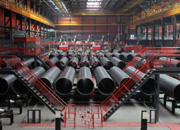 Threeway Steel is known as a professional supplier engaged in manufacturing and distributing a wide range of steel pipe, and our headquarter located the central part of China – Hunan and six associated factories throughout China.
Threeway Steel is known as a professional supplier engaged in manufacturing and distributing a wide range of steel pipe, and our headquarter located the central part of China – Hunan and six associated factories throughout China.
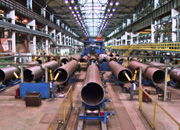 Threeway Steel is known as a professional supplier engaged in designing, manufacturing and distribution of a wide range of steel products with the headquarter located the central part of China – Hunan and six associated factories throughout China.
Threeway Steel is known as a professional supplier engaged in designing, manufacturing and distribution of a wide range of steel products with the headquarter located the central part of China – Hunan and six associated factories throughout China.
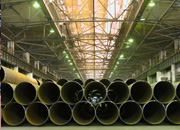 Threeway Steel is known as a professional supplier engaged in designing, manufacturing and distribution of a wide range of steel products with the headquarter located the central part of China – Hunan and six associated factories throughout China.
Threeway Steel is known as a professional supplier engaged in designing, manufacturing and distribution of a wide range of steel products with the headquarter located the central part of China – Hunan and six associated factories throughout China.
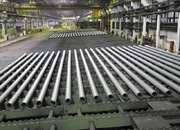 Threeway Steel is known as a professional supplier engaged in designing, manufacturing and distribution of a wide range of steel products with the headquarter located the central part of China – Hunan and six associated factories throughout China.
Threeway Steel is known as a professional supplier engaged in designing, manufacturing and distribution of a wide range of steel products with the headquarter located the central part of China – Hunan and six associated factories throughout China.
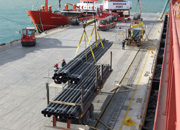 Threeway Steel is known as a professional supplier engaged in designing, manufacturing and distribution of a wide range of steel products with the headquarter located the central part of China – Hunan and six associated factories throughout China.
Threeway Steel is known as a professional supplier engaged in designing, manufacturing and distribution of a wide range of steel products with the headquarter located the central part of China – Hunan and six associated factories throughout China.

